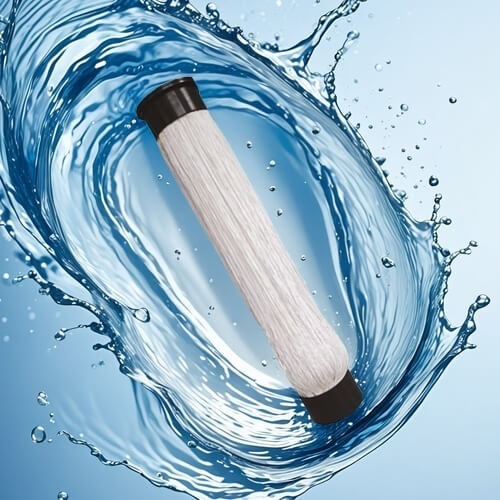What is decentralized sewage treatment?
Decentralized sewage treatment is a sewage treatment method relative to centralized sewage treatment. It is mainly aimed at situations where the amount of sewage is small and the pollution sources are relatively dispersed. The following is a detailed introduction:
I. Definition and concept
Decentralized sewage treatment refers to treating sewage at or near the source of generation, rather than transporting sewage to large sewage treatment plants for unified treatment through a complex sewage collection network like centralized sewage treatment. This treatment method is more flexible and is suitable for rural areas with low population density, small communities, resorts, highway service areas, single-family homes and other places.
II. Types of treatment technology
Septic tank
Septic tank is one of the most common decentralized sewage treatment facilities, mainly used to treat domestic sewage. It generally consists of one or more interconnected pools. After the sewage enters the septic tank, it stays in the pool for a period of time and is treated by sedimentation and anaerobic fermentation.
Solid matter settles at the bottom of the pool and is partially decomposed, while the liquid part enters the subsequent treatment unit or is discharged through overflow. For example, in a single-family home in a rural area, a septic tank can initially treat the sewage generated by the household and remove some organic matter and suspended matter. However, the treatment effect of septic tanks is limited, and the effluent usually contains high concentrations of organic matter and pathogens. It cannot be discharged directly and may require further treatment, such as subsequent purification through artificial wetlands.
Anaerobic bioreactors
This reactor uses anaerobic microorganisms to decompose organic matter in sewage under anaerobic conditions. Compared with septic tanks, anaerobic bioreactors have higher treatment efficiency. It can effectively treat high-concentration organic sewage, such as sewage produced by small farms.

Common anaerobic bioreactors include miniaturized applications of upflow anaerobic sludge blanket (UASB) reactors. In these reactors, organic matter in sewage is converted into gases such as methane and carbon dioxide under the action of anaerobic microorganisms, while reducing the organic content in sewage. However, the effluent of anaerobic bioreactors may also need aerobic treatment to further reduce the content of organic matter and nutrients to meet discharge standards.
Artificial wetlands
Artificial wetlands are a sewage treatment technology that simulates natural wetland ecosystems. It consists of a filler bed, aquatic plants, and microbial communities. When sewage flows through artificial wetlands, it is purified through physical, chemical and biological processes.
Physical processes include filtration and sedimentation, and suspended solids in sewage are intercepted in the wetland matrix. Chemical processes such as adsorption and ion exchange, wetland matrix can absorb some pollutants in sewage. Biological processes are the most important. Plant roots provide a good habitat for microorganisms, which decompose organic matter in sewage. At the same time, plants absorb nutrients (such as nitrogen and phosphorus) in sewage for their own growth. For example, in some rural areas or scenic spots, artificial wetlands can treat effluent from septic tanks or small sewage treatment facilities. The water treated by artificial wetlands can be used for irrigation or landscape water, etc.
Ecological toilets
Ecological toilets are a special decentralized sewage treatment facility mainly used to treat human excrement. It uses dry or water-free flushing technology to avoid the problem of large amounts of water used in traditional flushing toilets.
For example, composting ecological toilets convert feces into organic fertilizers through aerobic decomposition of microorganisms. Urine can be collected separately and used for agricultural irrigation. The treated feces are safe and hygienic and can be used for agricultural fertilization, realizing the resource utilization of waste.
III. Advantages
High flexibility
The decentralized sewage treatment system can be flexibly designed and installed according to different sewage sources and treatment requirements. For example, for a small resort, suitable sewage treatment facilities can be configured according to factors such as the number of guest rooms and catering scale, without being restricted by the layout of the centralized sewage treatment plant network.
Adapt to decentralized pollution sources
It can well treat decentralized sewage sources, such as sewage generated by a single or several households in remote rural areas. Due to the low population density in these areas, the cost of laying centralized sewage pipe networks is too high. Decentralized sewage treatment can be directly treated at the sewage generation site, avoiding the problem of long-distance sewage transportation.
Resource recycling
Some decentralized sewage treatment technologies, such as ecological toilets and artificial wetlands, can realize the recycling of resources in sewage. For example, water treated by artificial wetlands can be used for irrigation, and fertilizers produced by ecological toilets can be used for agricultural production, reducing dependence on external resources and conforming to the concept of circular economy.
4. Limitations
Limited treatment scale
Compared with centralized sewage treatment plants, decentralized sewage treatment facilities are usually smaller in scale. A single facility can generally only treat a small flow of sewage. For example, the treatment capacity of a small septic tank may be only a few cubic meters per day. For large-scale sewage discharge, multiple decentralized facilities need to be built, which may increase construction and management costs.
High maintenance and management requirements
Decentralized sewage treatment facilities are widely distributed, which makes maintenance and management more complicated. Professionals are required to regularly inspect, repair and maintain each facility to ensure its normal operation. For example, artificial wetlands need to regularly clean weeds and replace blocked substrates, and anaerobic bioreactors need to monitor microbial activity. If maintenance and management are not in place, the treatment effect may decrease.
The treatment effect may be unstable
Due to the influence of environmental factors (such as temperature, rainfall, etc.) and changes in sewage quality and water volume, the treatment effect of decentralized sewage treatment facilities may fluctuate. For example, in cold winter, the treatment efficiency of anaerobic bioreactors and artificial wetlands may be reduced because low temperatures affect the activity of microorganisms and plant growth.
